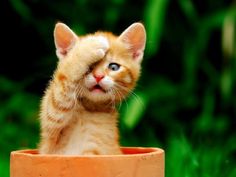My Tuesday Talk guest: Tracey Norman
The idea for WITCH was born late in 2015. I had recently graduated
from The Open University with an Honours degree in History and wanted to do
something practical with it. A few ideas kicked around for a while, but none
really caught my enthusiasm. Whatever I chose needed to be heavily connected to
some aspect of social history, which has always held a deep fascination for me.
I believe that it is essential to capture and preserve past traditions and
experiences wherever possible, using whatever medium suits them best. I have
seen stunning contemporary photographic work which captured the everyday lives
of a moorland family whose house and farming practices were still rooted in the
traditions of the 1950s. Recalling that display made me wonder if there was a
way for me to do something similar, but using the medium of theatre. As a
professional actress and member of a new Devon based production company, Circle of Spears Productions my project had to involve
theatre somehow.
One day, I hit on the idea of dramatising witch trial
transcripts. Having visited the Museum of Witchcraft and Magic earlier in the
year, it highlighted the importance of so many traditions, superstitions and
practices which could all be collated under the umbrella of ‘witchcraft’ whilst
still being a skill in their own right, such as herbalism. This idea caught my
imagination - I was curious to see if there was a way of presenting the actual
words spoken by those involved in witch trials to make them more accessible. I
mulled over a few possible treatments for a while before approaching the Museum
of Witchcraft and Magic in Boscastle to ask if they had any transcripts I could
work from. That was how I first encountered Deanes Gimmerton, who became the
inspiration for my character Margery Scrope.
Deanes Gimmerton, of Lyme Regis, Devon, was tried for
witchcraft in 1687. Hers is the most complete written record of an English
witch trial and I was able to read the various depositions given by the victims
in the case. They were absolutely fascinating and contained a wealth of
information. They particularly excited me because I had never heard of the case
and it was precisely that sort of material that I wanted to try to bring more
into the public awareness. However, I realised that I needed to slightly shift
my focus. The information, while fascinating to me as a historian, would not
translate particularly well to the stage. A huge amount of attention is normally given
to torture, interrogation, the trial process and the execution of the accused.
I wanted to do something different and look more closely at the accusation
itself. What had happened within communities to make neighbours turn on one
another in this way, knowing that such an accusation was likely to end with the
death of the accused? What social factors could have influenced people to take
that course of action?
I started researching the history of witch trials more
widely and, gradually, the story took shape. I selected a variety of actual
occurrences both from my research and from the Gimmerton papers and from this,
created my three characters: Margery Scrope, the accused; Thomas Latimer, her
accuser; and local magistrate Sir William Tyrell. The play is set in Sir
William’s library and takes the form of an informal deposition as the
magistrate questions Latimer and Scrope, trying to determine whether the
accusation has merit and whether Scrope should be committed for trial.
The story needed a less informal setting in order to bring
out the various plot points, so a little dramatic licence had to be taken with
the early Elizabethan legal system. The questioning had to be less structured
than it would be in court and the characters had to be able to react freely to
what they were hearing. In addition, my accused, Margery, needed to be able to
provide rebuttal to Latimer’s evidence against her, which she does with great
energy. Ultimately, the story seemed almost to write itself and, unusually for
me, I found that I didn’t want to overdo the editing, a trap I generally fall
into every time. I sent the finished script to a historian friend who is an
expert in witch trials. After a few facts were corrected, I approached the
Museum of Witchcraft and Magic to see if they would be interested in Circle of
Spears performing the show for them.
The Museum of Witchcraft and Magic’s managers, Peter and
Judith Hewitt, were incredibly enthusiastic and supportive of the project from
the outset and were happy to arrange a test audience for the show. I wanted to
make sure that I had got my facts right, both as a historian and as a writer
portraying witchcraft when I am not a witch myself. I was overwhelmed with the
positive feedback we received, which included a fantastic review by author
Joyce Froome. One or two tweaks later, the show was ready to be premiered.
Our summer season at the Museum ran from July to October
2016. The show was incredibly well-received by all who have seen it and the
audience feedback has been absolutely fantastic. “Compelling throughout”,
“Deeply moving performance”, “The best thing I’ve seen in years”,
“Well-researched,” “Thought-provoking” and “Utterly immersive” are just a few
of the comments received. In addition, several audience members have been
reduced to tears by the end of the show. I won’t give anything away, but there
are a series of twists in the plot so the ending is not necessarily what you
would expect…
The play is specifically designed to stimulate discussion,
so while it poses a variety of questions, it does not necessarily provide
answers. I didn’t want the audience to find themselves following a predictable,
linear story where the accused is clearly innocent or guilty. There are a lot
of grey areas. This has enabled us to have some brilliant Q&A sessions
after each performance – audiences are overwhelmingly keen to engage with us
and talk about the play’s themes of loss and persecution and the fact that they
resonate with our world today just as much as they did with Margery’s world.
So what is next for WITCH? It has already gone further than
I dared hope and I am currently in discussion with several tour venues for
2017. We have dates for Exeter in February and April and will be at Crediton’s
new East Town Theatre during this year’s Credfest in June. Most exciting of
all, I recently successfully pitched a book proposal to a publisher in Cornwall
– the book will be based on WITCH and will examine in more detail the various
aspects of social history, folklore and tradition which appear in the play, but
will look at them from the point of view of my three characters to show how
theatre can be used to preserve our social history.
As one of the new writers-in-residence at the East Town Café in Crediton, you will find me there on Wednesdays, working on the book. You can
also pick up a copy of the audio version of the play from the online store at www.circleofspears.com/store and
follow WITCH-related news on Facebook (Tracey Norman’s WITCH – preserving
folklore and tradition through theatre) and Twitter @WITCHplayCoS
website (to be active soon)





















































Wiv luv from, Jenno...
Love, Carole in Canad
You're welcome to leave more comments below! LOL